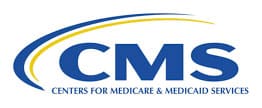
Apr 6, 2022 | MedCycle Solutions, Partner
Although Telemedicine has been around for years, it was really the COVID-19 pandemic that expedited the need for implementing these services rapidly and on a larger scale.
According to Medicaid.gov “telemedicine seeks to improve a patient’s health by permitting two-way, real time interactive communication between the patient, and physician or practitioner at the distant site.” This can be accomplished via telephone, video calls, or through web-based applications utilizing a microphone and video camera.
In our previous article, 4 Ways Telehealth Has Changed the Landscape of Patient Care, we discussed ways practitioners can provide safe, necessary patient care while providing a cost-effective alternative to augment revenue.
To assist in navigating telemedicine/telehealth, we’ve provided five telehealth links for providing healthcare.
1. Telehealth for Providers: What You Need to Know
The Centers for Medicare & Medicaid Services (CMS) provides a 17-page document with electronic links for telehealth and telemedicine. This resource is for providers who wish to establish permanent programs. It includes links to vendors, patient monitoring, documentation tools, etc.
2. CMS List of Telehealth Services
The CMS have made available resources for medical billing and coding. This resource link contains the 2022 medical coding schedule for allowed services for Medicare telehealth services.
3. How to Get or Provide Remote Health Care
The Health Resources & Services Administration (HRSA) provides information for both patients and providers on telehealth services. Providers can get information on remote care, find recent COVID-19 reimbursement, billing, and policy changes.
4. Introduction to Telehealth for Behavioral Health
The HRSA provides information on getting started with providing Behavioral Telehealth. This may also be referred to as telebehavioral health, telemental health, telepsychiatry, or telepsychology. There are resources for developing a Telehealth strategy, billing, and preparing patients along with many other resources.
5. Is Telehealth Viable for Mental Health Needs Post-Pandemic?
The American Association of Post-Acute Care Nursing (AAPACN) provides an in-depth article meant to help nursing home facilities walk thru providing mental and behavioral healthcare in its facilities. Prior to COVID-19, long-term care facilities didn’t see the need for technology. COVID-19 proved that by utilizing smaller technology, such as iPads, residents are able to get safe, immediate mental and behavioral health care.
MedCycle Solutions provides Revenue Cycle Management, Credentialing, Outsourced Coding, and Consulting Services to a number of healthcare providers in a variety of specialties. To find out more about MedCycle Solutions services please visit www.MedCycleSolutions.com.

Mar 15, 2022 | MedCycle Solutions, Partner
By Ranadene Tapio, MBA, CMRS, CPCS
As healthcare delivery gets more complex, patient reimbursement decreases, and patient demand increases, practices are forced to reevaluate their revenue cycle management (RCM) process.
Some people underestimate the importance of effective revenue cycle management. RCM is the lifeblood of your practice. It determines almost all key performance indicators and practice health.
Along with the obvious indicators, here are six positive impacts that effective revenue cycle management has on a healthcare practice.
- Collections. An effective RCM process will include a strategy for collections. This should include prompt reminders, multiple payment options and other collections best practices.
- Productivity. A commonly overlooked benefit of an effective RCM strategy is increased productivity for your staff. Your team will be able to spend less time chasing collections, correcting erroneous codes and reinventing the wheel. A well laid out process will be easy to follow and more efficient.
- Team morale. Along with increased productivity, you’re likely to see a boost in team morale as a direct benefit of a defined RCM process. When employees are productive and accomplishing goals, they are happier and find more satisfaction in their work. It’s a win/win!
- Bottom line. Possibly the best benefit of optimizing your RCM is an improved bottom line. You’ll be collecting more, spending less, attracting more patients and being more productive. Whether they’re hard benefits or soft benefits, they’ll have an impact on your bottom line.
- Patient satisfaction. With a well formulated plan in place, your practice will be running more efficiently and effectively. Patients will notice the difference that comes in better efficiency, communication and processes. In many practices, these benefits are noticed by the patients in the forms of less wait time, quicker registration and overall a more organized delivery of care.
- Compliance. An effective RCM process helps ensure compliance and protection of patient data. When a process is followed, fewer errors are made, which leads to fewer compliance issues.
Is your RCM process optimized? Is it well-developed, well-defined, and well-understood by your staff? Are you reaping the benefits of a healthy revenue cycle management process?
There are many great organizations that can help you in these areas – MedCycle Solutions is one of them. If you’re wondering how partnering in these areas could work for your practice, let’s connect.
Ranadene (Randi) Tapio, MBA, CMRS, CPCS is the Founder and CEO MedCycle Solutions, which provides Revenue Cycle Management, Credentialing, Outsourced Coding, and Consulting Services to a number of healthcare providers in a variety of specialties. To find out more about MedCycle Solutions services please visit www.MedCycleSolutions.com. You can reach Randi via email at Randi@MedCycleSolutions.com or call 320-290-6448.

Apr 13, 2020 | Alpha II, Medical Billing Software Blog, Partner
One of our partners, Alpha II, is presenting a special webinar on COVID-19 billing changes on April 16, 2020, “COVID-19: Critical Coding and Regulatory Updates,” to provide the most up-to-date information on the coming changes to new procedures, diagnosis codes, telehealth updates, and changes to regulatory policies.
As guidelines for coding and billing of COVID-19 services are revised almost daily, rest assured Alpha II is working to implement these critical changes to regulations and coding guidance as quickly as possible by conducting near-daily promotions.
Here is a very brief summary of some of the updates we’ve implemented:
-
- Clarification of correct telehealth rendering POS and use of modifier -95
- Modification of diagnosis code edits for billing of COVID-19 symptoms from February 20 – March 31, 2020, and use of new diagnosis U07.1 for dates of service on or after April 1, 2020
- Addition of the new AMA CPT code 87635 effective March 13, 2020
- Addition of the new CMS CPT codes U0001 and U0002 retroactively effective February 4, 2020
- Modification for waiver of DME replacement requirements prior to March 1, 2020
- Modification for waiver of occurrence code 70 on SNF three-consecutive day stay validation prior to March 1, 2020
- Modification to LCD/NCD edits to relax rules related to respiratory-related devices and services
- Modification to Medicaid for the temporary suspension to prior authorization rules in PHE areas effective March 1, 2020
You can get all the latest COVID-19 specific updates here: https://www.alphaii.com/landing/covid19
Alpha II is an EZclaim partner that provides “Claim Scrubbing” for our medical billing software system. View our website for more details on this: https://ezclaim.com/partners/

Dec 10, 2019 | Alpha II, Claims, Partner, Revenue
Getting Claims Right the First Time
Getting Claims Right the First Time. Contributed by Timothy Mills, Chief Growth Officer, Alpha II, LLC
The numbers are staggering. Industry averages report that nearly 20% of all claims are denied, rejected, or underpaid. And considering the cost to rework claims — not to mention even higher appeal costs — as many as 60% of returned claims are never resubmitted.
With figures like these, it’s no wonder medical practices continue to face intense financial pressure. As negotiated reimbursements stagnate and operating expenses like rent and salaries continue to increase, the struggle to maintain steady revenue becomes even more crucial. For many practices, conducting reviews of their revenue cycle workflow would show gaps in their claims process. The good news is – these gaps can be bridged with the help of emerging technology.
With a saturated market of coding, billing, and compliance solutions, how do you begin to find the right technology for your practice? When trying to improve revenue integrity, it is important to understand exactly what vendors offer. For example, consider the term “first-pass claims rate,” which is still used by some healthcare IT vendors to represent the number of claims initially accepted by payers. But what is often overlooked is the number of those initially accepted claims that will be denied or underpaid. A better question would be – what percentage of claims are getting paid the first time they are submitted?
The fact is, practices that do not employ the latest clinical coding and editing tools within their revenue cycle are leaving money on the table. This is revenue that is rightfully theirs but is being pursued at high, incremental costs. It’s time to rethink traditional denials management practices, move beyond the “first pass claims rate,” and embrace the future of denial prevention.
It’s your money. Go after it.
Still not convinced that investing in emerging clinical coding and editing software can save your practice money? Let’s see what relying on traditional denials management methods might really be costing you.
Each rejected, denied or underpaid claim represents earned revenue your practice is missing out on. Based on industry reports, the average cost to rework a claim has been pegged at more than $25, and appeal costs can skyrocket to over $100. It’s estimated that as many as two-thirds of all denied claims are recoverable. But practices often weigh the reimbursement amount of a claim against the cost to rework or appeal that claim. For smaller claims, many decide it just isn’t worth the effort, which is why getting claims right the first time should be the ultimate goal.
So how much are practices losing by simply correcting and resubmitting denied claims using traditional denial management methods? Let’s look at an example using figures from an actual mid-sized specialty practice. This practice submits 1,900 claims a month and the average claim is $150. They have a better-than-average denial/rejection rate of 10 percent. Even with that lowered rate, this practice is losing roughly $28,500 a month to unresolved denied claims. If two-thirds of those denied claims are recoverable, they stand to recoup $19,095 in reimbursements after the claims are corrected and resubmitted. Factor in the cost associated with reworking denied claims using the industry average of $25 per claim, and this practice is spending $4,750 in administrative charges alone to recover their own revenue. This brings their actual recovered revenue down to $14,155 per month or almost $170,000 annually. Investing in a comprehensive clinical coding and editing solution is still cheaper than what the practice spends per month when reworking denied claims.
The Alpha II Solution
Are you ready to submit precise claims the first time? Contact Alpha II, a leader in revenue cycle solutions. Our comprehensive clinical claim editing solution, ClaimStaker, covers the entire continuum of care, verifying claim data from the payer’s perspective and allowing for corrections prior to filing.
Check out our Denial Impact Assessment Calculator to see what your denials really cost your practice or contact us today for a free personalized Claims Assessment. See why ClaimStaker does more than clear claims. It gets claims paid.
We work hard to update our blog to keep you up-to-date on what’s happening in the field of medical billing software. If you have a topic you would like to see discussed, please contact us.








